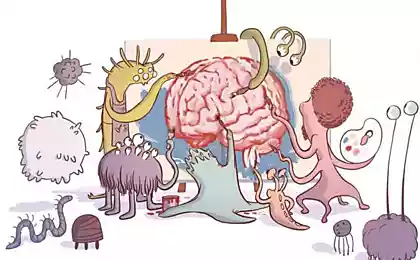188
How to feel more confident in the spotlight
Scientifically based methods of overcoming fear of publicity

75%
People have a fear of public speaking, making it one of the most common phobias.
Imagine you walk into a crowded room and hundreds of eyes turn to you. The heart begins to beat rapidly, the palms sweat, and the voice trembling treacherously. Familiar? Fear of being the center of attention affects millions of people around the world, but modern psychology offers effective tools to overcome it.
It's important to understand: Fear of publicity is not a sign of weakness or lack of character. It is an evolutionary mechanism that once protected our ancestors from being expelled from the tribe. In the modern world, however, this mechanism often works against us.
The Neurobiology of Fear: What Happens in the Brain
When we are in the spotlight, our brain’s amygdala activates the fight-or-flight response. Adrenaline and cortisol fill the bloodstream, the prefrontal cortex, which is responsible for rational thinking, temporarily shuts down. Research by Matthew Lieberman of UCLA shows that awareness of these processes reduces their intensity by 30-40%.

Practical advice: In a moment of excitement, say to yourself, “It’s my amygdala that’s activated, now I’m feeling an adrenaline rush.” Simply naming an emotion reduces its intensity.
Instant exposure techniques
Breathing practices
Technique 4-7-8
Inhale 4 counts, delay 7, exhale 8. This practice activates the parasympathetic nervous system, reducing stress levels in 30 seconds. It was developed by Dr. Andrew Weil based on ancient yogic practices.
Box breathing
Used by special forces and fighter pilots. Inhale at 4, delay at 4, exhale at 4, pause at 4. Repeat 5-7 cycles. Studies show a 60% reduction in cortisol levels.
Physiological techniques
Harvard Business School conducted an experiment: participants who took a “power posture” (hands on the hips, straightened shoulders) for just 2 minutes showed 23% more confident results in subsequent trials. Amy Cuddy’s research has revolutionized understanding the connection between body and mind.
Attention: Do not confuse nervousness with excitement. Research by Harvard’s Alison Wood Brooks shows that when you say “I’m excited” instead of “I’m calm,” your productivity increases by 17%.
Long-term strategies for building confidence
Graduated exhibition
The method used in cognitive behavioral therapy involves a gradual increase in the level of exposure to stress. Start by speaking in front of a mirror, then in front of a close friend, then in front of a small group of acquaintances, and so on.

Weekly Exposition Plan
Day 1-2: Videotape yourself
Day 3-4: Speaking to family
Day 5-6: Presentation to colleagues
Day 7: Public speaking
Cognitive restructuring
Dr. David Burns, author of Feeling Good, identifies 10 cognitive biases that increase anxiety. The most common for fear of publicity:
Catastrophe
Instead of “If I make a mistake, it will be terrible,” think “Even if I make a mistake, most people won’t notice it or will quickly forget it.”
Mind reading
Instead of “Everyone thinks I’m a loser,” use “I can’t know what others think, and most are focused on their own concerns.”
Advanced Techniques from Professionals
Method of acting
Stanley Kubrick said to his actors, “Don’t play emotion, play action.” When it comes to public speaking, focus not on what you look like, but on what you want to convey to your audience. It shifts the focus from itself to the message.
A secret from TED speakers: Imagine you’re sharing important news with your best friend. This mental attitude instantly changes the dynamics of the performance from formal to personal.
The "Inner Observer" technique
Developed as part of Mind Fullness therapy, this technique involves observing one’s emotions from the outside. Instead of “I’m afraid,” say “I notice I’m afraid.” This creates psychological distance and reduces emotional intensity.
Practical exercise: Before an important talk, conduct a 5-minute meditation, focusing on observing your breathing and bodily sensations without trying to change them.
Social aspects of confidence
Studies show that 70% of an impression of a person is formed in the first 7 seconds. But the paradox is that the audience tends to be friendly. A study by Cornell University found that 89% of listeners wish the speaker success before the presentation.
67%
People don’t even notice minor mistakes in other people’s speeches.
Spotlight effect
Psychologists Gilovich and Savitsky have discovered the phenomenon of the “spotlight effect” – we overestimate how closely others monitor our behavior. In reality, people notice our mistakes 2-3 times less often than we think.
Remember: Most people in the audience think about their own problems rather than analyzing your every word or gesture.
Building long-term confidence
Creating a success bank
Neuropsychologists recommend maintaining a “victory diary”—recording every little success in public situations. The brain gradually forms new neural connections that associate performance with positive experiences.
Structure of diary entry
The situation: Where and when it happened
Action: What exactly did you do?
Result: What reaction did you get?
Feelings: How did you feel after?
The Future Me Technique
Visualize yourself after a year of regular public speaking practice. How do you look? What do you say? What are your emotions? Studies show that detailed visualization of the desired future increases motivation to act by 42%.
Emergency methods in critical situations
Sometimes fear comes suddenly and instant action is needed. Here are some proven techniques from sports psychologists:
5-4-3-2-1 technique
Name 5 things you see, 4 things you hear, 3 things you smell, 2 things you smell, and 1 things you taste. This brings you back to the present moment and interrupts panic thoughts.
Physical discharge
Squeeze your fists for 10 seconds, then tighten sharply. Repeat 3 times. This physically “resets” muscle tension and reduces stress levels.
Conclusion: The Path to Sustainable Confidence
Overcoming fear of publicity is not a one-off achievement, but a developing skill. Every time you consciously choose to stay in an uncomfortable situation instead of running away, you build your confidence. Remember, even the most successful speakers once had the same fears as you do now.
Main point: Confidence is not the absence of fear, but action in spite of fear. Every step in the direction of your fears makes you stronger.
Start small, be patient with yourself, and remember that your message is more important than your excitement. The world needs what you can give, and your unique perspective deserves to be heard.
Glossary of terms
Almond-shaped body (amygdala)
Part of the limbic system of the brain responsible for processing emotions and activating the fight-or-flight response in stressful situations.
cortisol
Stress hormone produced by the adrenal glands in response to stressful situations. Elevated cortisol levels can impair memory and concentration.
Prefrontal cortex
The area of the brain responsible for executive functions: planning, decision-making, impulse control and rational thinking.
Graduated exhibition
Therapeutic method of gradual exposure to the stress factor in order to reduce the anxiety response through addiction.
Cognitive distortions
Systematic errors in thinking that distort perceptions of reality and reinforce negative emotions.
Parasympathetic nervous system
The part of the autonomic nervous system responsible for rest and recovery, the opposite of the sympathetic stress system.
Mind-fulness
Practice conscious attention to the present moment without evaluations and attempts to change what is happening.
Spotlight effect
The psychological phenomenon of overestimating how closely other people watch our behavior and notice our mistakes.
4 basic actions that ruin the psyche of a child: accuse, shame, condemn, devalue
Tarot Cards: A Psychological Instrument or Mysticism?























